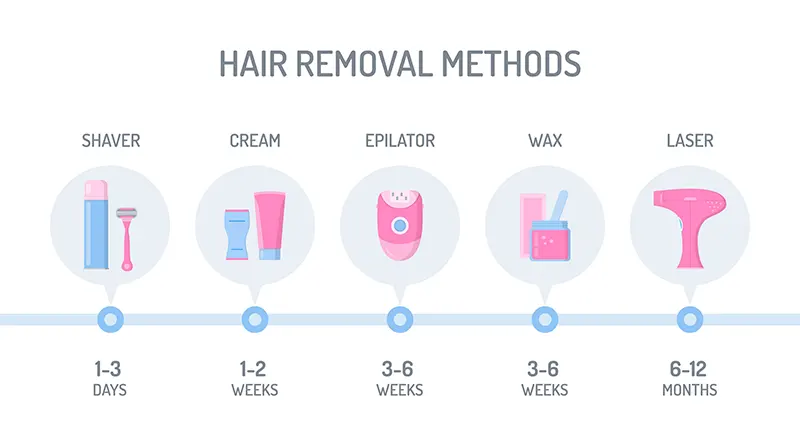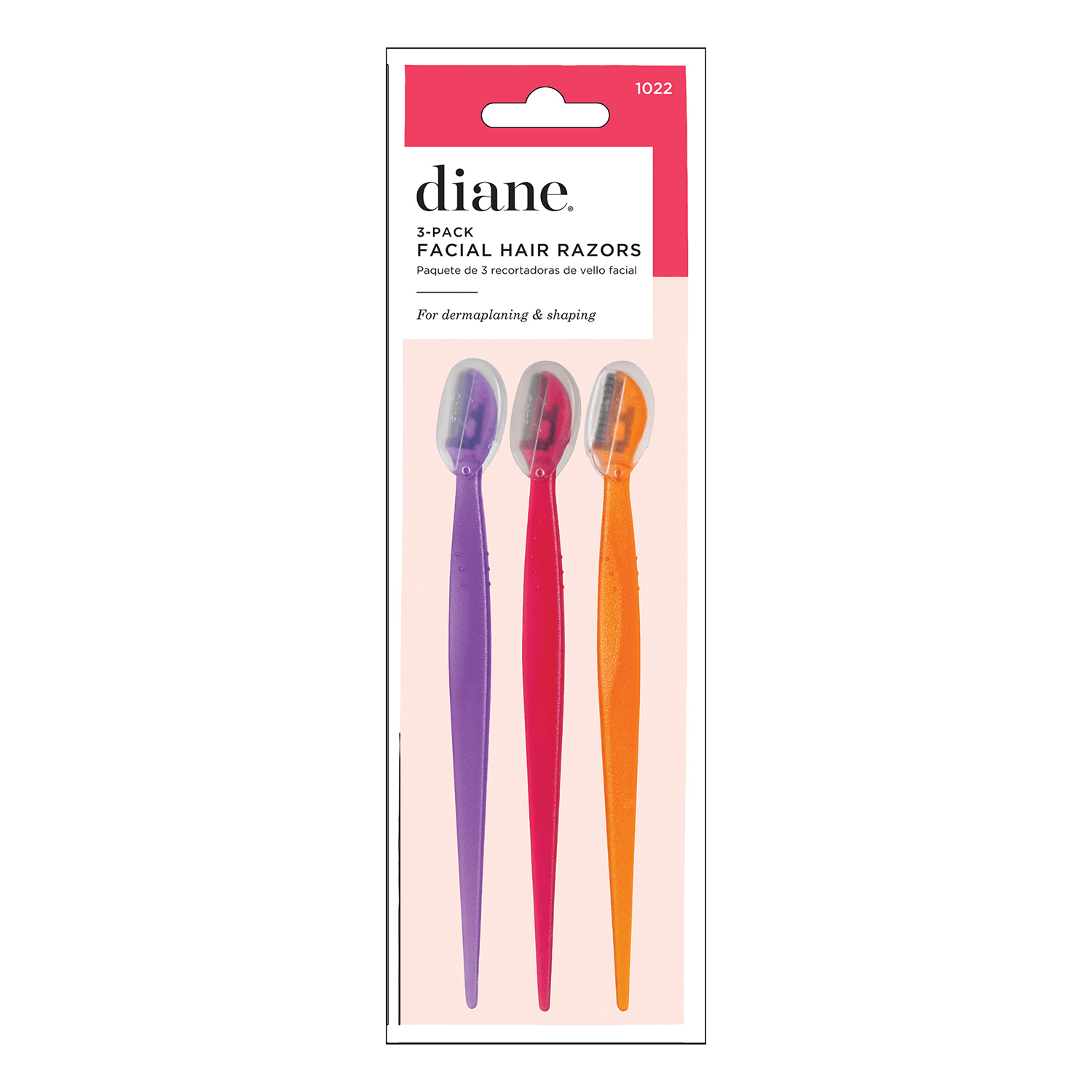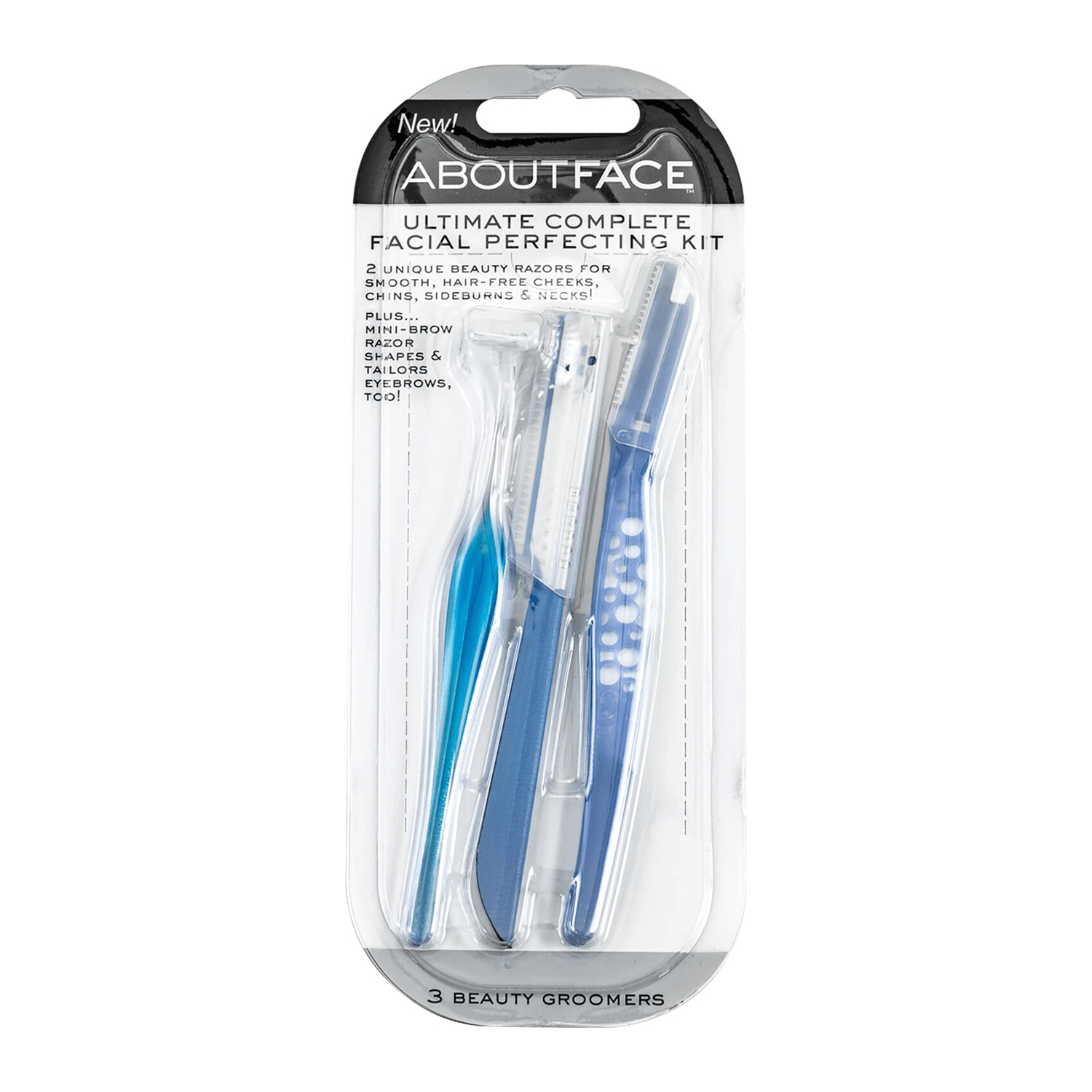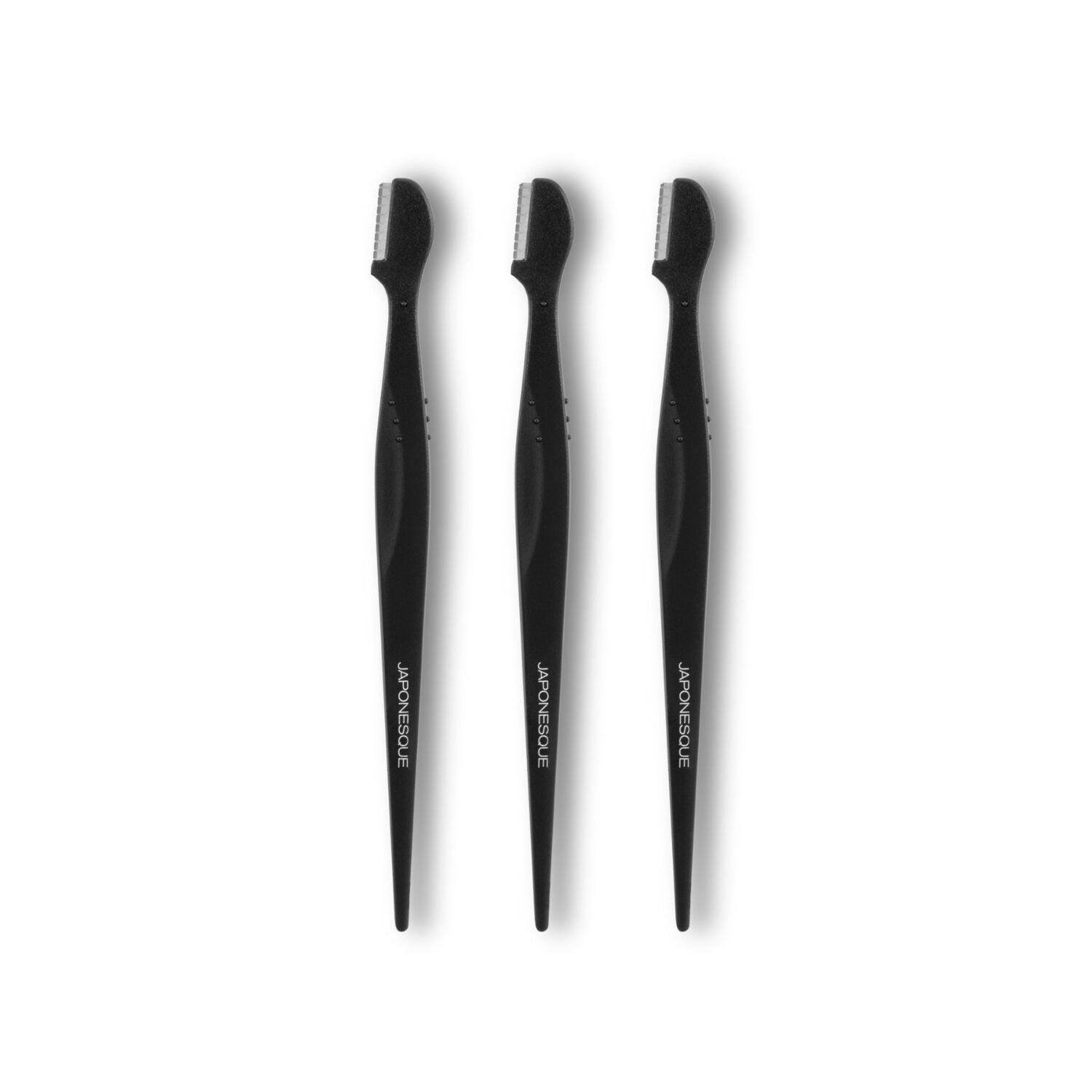Epilators vs Depilators: Understanding the Difference
The terms “depilator” and “epilator” are often used interchangeably, which can create some confusion.
However, they refer to different things:
- Depilator – The term “depilator” is a general term used to describe any device or product that removes hair from the skin's surface, regardless of the method. It encompasses various temporary hair removal tools like razors, waxing kits, depilatory creams, and even epilators.
- Epilator – An epilator specifically refers to a device that mechanically removes hair from the root. It typically consists of multiple rotating tweezers that grasp and pull out hairs as you move the device over your skin. Epilators provide longer-lasting results than shaving, as they remove hair from the root, resulting in slower regrowth.
In essence, all epilators are depilators, but not all depilators are epilators.
Depilators encompass a broader category of hair removal methods, while epilators specifically focus on mechanical, root-level hair removal.

Ask the Expert: Epilators vs. Depilators: Which is best for me?
BY SAMANTHA WELCH, ESTHETICIAN
When choosing a hair removal method, it's important to consider your individual preferences, lifestyle, and budget.
You should also think about your pain tolerance, how long you want your skin to stay smooth, and any specific skin concerns you may have, such as sensitivity or allergies.
This will help you make an informed decision that suits your needs.
- Short-term Depilators: 1-Week Regrowth – Affordable & quick, but temporary. Common depilators like shavers and depilatory creams are ideal for painless, short-term hair removal. However, hair grows back very quickly, so you'll have to do it almost daily.
- Medium-Term Depilators (Epilators): 2-3 Weeks Regrowth – Epilators offer results for more extended periods by removing hair from the root, lasting 2-3 weeks depending on how fast your hair grows. However, initial use may cause discomfort or pain, especially for sensitive skin. It can also stimulate blood supply and encourage long-term growth, as well as distort the follicle.
- Permanent Hair Reduction – You might prefer photoepilators (IPL/Laser) if you want a longer-term reduction in hair growth. They destroy the root in multiple sessions and can delay re-growth anywhere from months to indefinitely. However, they require a higher initial investment.
Related: The Best At-Home Laser & IPL Hair Removal: Esthetician’s Choice
We’ve explained in more detail below, and well as listed the pros and cons.
It's essential to consider these factors carefully to select the most suitable hair removal method that best fits your needs.
- Epilators vs Depilators: Understanding the Difference
- Ask the Expert: Epilators vs. Depilators: Which is best for me?
- Understanding Depilation: Beyond Chemical Depilatories & Shaving
- Making an Informed Choice: Comparative Analysis
- Regrowth Periods: Expected Results with Different Depilators
- Explaining Epilators
- Factors Influencing Choice: Short-term Depilators vs. Epilators vs. Photoepilators (IPL/Laser)
- References:
Understanding Depilation: Beyond Chemical Depilatories & Shaving
When discussing removing unwanted hair, we often associate “depilation” with specific methods like chemical depilatory creams or traditional shaving.
However, in medical terminology, depilation refers to a broader concept encompassing various techniques to remove hair from the body.
In medical terms, depilation means the removal of hair, and it includes a wide range of methods beyond chemical creams or shaving.
This umbrella term covers all approaches used to get rid of unwanted hair, whether through mechanical means like shaving with razors or clippers, using depilatory creams or lotions that dissolve hair at the skin's surface, or employing methods that pull hair from the root such as waxing or using epilators.

Epilation, which involves removing hair from the root, falls under the broader category of depilation as well. This method includes plucking, waxing, or using devices like epilators that grasp and pull hair out from the follicles.
Understanding depilation in its medical context provides a more comprehensive view of the many techniques available for hair removal. It goes beyond the commonly associated methods and includes various approaches catering to different preferences, skin types, and desired outcomes.
So, the next time you come across the term “depilation” in hair removal, remember that it means not only chemical depilatories or shaving but encompasses a wide array of methods to achieve smooth and hair-free skin.
Making an Informed Choice: Comparative Analysis
| Factors | Short-term Depilators | Epilators | Photoepilators (IPL/Laser) |
| Effectiveness | Temporary removal at surface | Longer-lasting, from the root | Longer-term reduction in hair growth |
| Cost | Affordable | Moderately priced, potential long-term savings | Higher initial cost, potential long-term savings |
| Duration of Smoothness | Short-term, days to a week | Longer-term, weeks | Longer-term reduction in hair growth |
| Pain Level | Pain-free | Initial discomfort possible, painful if low tolerance | Normal IPL – Mild sensation or discomfort during treatment; Specialty Devices (e.g. JOVS Venus Pro II, Ulike Sapphire Air3) – Painless |
| Suitability for Different Skin Types & Hair Color | Generally suitable for all skin types & hair color | Variable based on sensitivity | Normal IPL – Best for lighter skin tones and darker hair; Specialty Devices (e.g. ViQure EpiPro, Silk'n Infinity) – All skin tones & hair colors |
Regrowth Periods: Expected Results with Different Depilators

Choosing the right hair removal method depends on your personal preferences and lifestyle needs, which are heavily influenced by the length of time between sessions.
From quick but temporary solutions to more long-lasting but potentially painful techniques, the time it takes for hair to regrow is crucial in selecting the most appropriate approach.
By understanding the nuances of regrowth periods, you can explore various hair removal methods that offer unique pros and cons.
This allows you to customize your approach based on how often you want to touch up and the balance between quick results and long-term maintenance needed to achieve a hair-free look.
1-Week Regrowth: Short-term Depilators
Short-term depilators remove hair quickly, but the hair grows back within a week. These products only remove hair from the surface, so you need to use them frequently.
Shaving Razors
Shaving razors are handheld tools equipped with one or multiple blades used for cutting hair at the skin's surface during the shaving process.
They are commonly used for manual hair removal, particularly for facial hair or body hair, and come in various types such as cartridge razors, disposable razors, safety razors, and straight razors.
These tools are designed to provide a close shave by cutting the hair at or slightly below the skin level.
+ Get the Best Prices Online
Electric Shavers
Electric shavers are grooming devices used for shaving facial hair, body hair, or other hair-bearing areas.
These shavers use oscillating or rotating blades to cut the hair instead of manual blade movement as seen in traditional razors.
Electric shavers are generally convenient and faster to use than traditional manual razors.
They can be used on dry skin without the need for shaving cream or gel, although some models can also be used in the shower with water or shaving products.
This gives a quick and efficient shaving solution with minimal mess or skin irritation.
However, compared to root-based methods, regrowth occurs more rapidly.
+ Get the Best Prices Online
Depilatory Creams
Depilatory creams, also known as hair removal creams, are topical products used to remove unwanted hair from the skin's surface.
These creams contain chemicals, such as calcium thioglycolate or potassium thioglycolate, that break down the protein structure of the hair, allowing it to dissolve at or slightly below the skin's surface.
Depilatory creams offer a quick and painless method of hair removal and can be used on various body parts, such as the legs, arms, underarms, and bikini line.
However, it's essential to follow the instructions carefully to avoid skin irritation or adverse reactions, as these creams contain chemicals that can cause sensitivity or allergic reactions in some individuals.
Performing a patch test on a small area of skin before using the cream on larger areas is advisable to check for any adverse reactions.
+ Get the Best Prices Online
Hair Removal Sprays
Hair removal sprays are topical products designed to remove unwanted hair from the skin's surface.
Similar to depilatory creams, these sprays contain chemicals that work to break down the protein structure of the hair, allowing it to dissolve or weaken, facilitating easy removal.
Hair removal sprays offer an alternative method to creams for those who prefer a spray-on application. They are used on various body parts like the legs, arms, underarms, and bikini line.
As with depilatory creams, it's important to follow the manufacturer's instructions carefully and perform a patch test on a small area of skin to check for potential adverse reactions or skin sensitivity before applying the spray to larger areas.
Some may experience skin irritation or allergic reactions due to the chemicals present in these sprays, so caution is advised when using them.
+ Get the Best Prices Online
2-3 Weeks Regrowth: Medium-Term Depilators
These depilation methods, such as epilators or waxing, offer results that last for a moderate duration before noticeable hair regrowth occurs, typically within the range of 2 to 3 weeks. They provide longer-lasting smoothness compared to short-term methods like shaving or depilatory creams but are not considered permanent hair removal solutions.
Electric Epilators
Electric epilators are handheld devices used for hair removal. They feature rotating or oscillating tweezers that grasp multiple hairs simultaneously and pull them out from the root.
Electric epilators are suitable for various body parts, including legs, arms, underarms, and the bikini area. They provide longer-lasting smoothness compared to shaving because they remove hair from the root, resulting in slower regrowth.
While effective, some people may find epilation initially uncomfortable or painful, especially during the first few uses.
However, discomfort usually diminishes with regular use as the skin becomes accustomed to the process. Additionally, exfoliating the skin before epilation can help reduce the chances of ingrown hairs.
Electric epilators come in various models with different features such as built-in lights, multiple speed settings, and attachments designed for specific body areas.
Regular maintenance, including cleaning the device after each use, is important to ensure optimal performance and hygiene.
+ Get the Best Prices Online
Waxing Kits
Waxing kits are at-home or professional products that contain wax and accessories for hair removal.
These kits are used to remove unwanted hair from various body parts by applying wax to the skin's surface, allowing it to adhere to the hair, and then quickly pulling off the wax, along with the attached hair, from the root.
Waxing kits offer longer-lasting results compared to shaving because they remove hair from the root, resulting in slower regrowth.
However, they may cause temporary discomfort or pain during the process, especially for those with sensitive skin.
Proper technique, following the instructions provided with the kit, and performing a patch test on a small area of skin beforehand are recommended to minimize the risk of skin irritation or allergic reactions.
+ Get the Best Prices Online
Sugaring
Sugaring is a hair removal technique that involves using a natural paste made primarily of sugar, water, and lemon juice or other natural ingredients to remove unwanted hair from the skin's surface.
Similar to waxing, sugaring aims to remove hair from the root, providing longer-lasting hair-free results.
Sugaring is believed to be less painful than traditional waxing because the sugaring paste adheres less to the skin, reducing the likelihood of irritation or discomfort.
Additionally, sugaring paste is water-soluble, making it easier to clean off the skin after the procedure.
Benefits of sugaring include its natural ingredients, which are less likely to cause skin irritation or allergic reactions compared to some chemical-based hair removal methods.
It is suitable for various body parts and different skin types, including sensitive skin.
+ Get the Best Prices Online
Threading
Threading is a hair removal technique that originated in Eastern countries and involves using a twisted cotton thread to remove unwanted hair, primarily from the eyebrows, upper lip, chin, and other facial areas.
Threading is favored for facial hair removal due to its precise nature, allowing practitioners to shape eyebrows or remove fine hair quickly.
Many prefer threading for facial hair removal as it is known to provide cleaner lines and shapes compared to other methods. It's also considered gentler on the skin compared to techniques like waxing or using depilatory creams, making it suitable for those with sensitive skin.
Some people may experience temporary redness or minor discomfort during threading, but these effects typically subside quickly. Additionally, threading does not involve the use of chemicals or products, making it a more natural hair removal method.
However, as with any hair removal technique, individual experiences with threading can vary, and finding a skilled practitioner is essential for optimal results.
+ Get the Best Prices Online
Permanent Hair Reduction
Permanent hair reduction devices refer to technologies or treatments that aim to reduce hair growth in a long-lasting or permanent manner. These devices utilize various mechanisms to target and disrupt the hair follicles' ability to grow new hair.
Laser Hair Removal
Laser Hair Removal is a cosmetic procedure that uses concentrated beams of laser light to target and damage the pigment (melanin) in hair follicles. The heat generated by the laser damages the hair follicles' ability to grow new hair without harming the surrounding skin.
Over multiple sessions, spaced several weeks apart, the treatment aims to inhibit hair regrowth. LHR is effective on a variety of body areas and is commonly used for larger areas such as legs, back, chest, and arms.
Related: The Best At-Home Laser & IPL Hair Removal: Esthetician’s Choice
+ Get the Best Prices Online
Photoepilation or IPL Devices
IPL devices also use light energy to target the pigment in the hair follicles. However, unlike lasers that emit a single wavelength of light, IPL devices emit a broad spectrum of light wavelengths. These wavelengths penetrate the skin and are absorbed by the melanin in the hair, generating heat that damages the follicles.
IPL treatments aim to achieve long-term hair reduction after multiple sessions. IPL devices are versatile and can be used for hair reduction on various body areas, including the face, arms, legs, and bikini line.
Both LHR and IPL treatments are effective for reducing hair growth, but the choice between the two often depends on factors such as skin type, hair color, and individual preferences.
Related: The Best At-Home Laser & IPL Hair Removal: Esthetician’s Choice
+ Get the Best Prices Online
Electrolysis
Electrolysis is a method of permanent hair removal that uses an electric current to destroy the growth center of individual hair follicles. This process aims to inhibit future hair growth in the treated area.
During electrolysis, a specialized device called an electrolysis machine is used. A fine probe, usually a thin metal needle, is inserted into the hair follicle opening, and a low-level electrical current is applied. This electric current damages the hair follicle's growth cells, preventing new hair from growing.
Electrolysis is considered a permanent hair removal method because it targets each hair follicle individually, making it suitable for various hair colors and skin types. It is commonly used for small areas like the eyebrows, upper lip, chin, and bikini line.
However, electrolysis may require multiple sessions to achieve desired results as hair grows in different cycles and stages.
Related: Electrolysis vs. Laser Hair Removal: The Complete Guide
+ Get the Best Prices Online
Each depilatory category offers unique methods tailored to individual preferences, providing a diverse range of options for effective hair removal.
Explaining Epilators
Definition and Mechanism
Epilators are handheld devices that can pluck multiple hairs from their roots simultaneously, leaving the skin smooth for an extended time.
These gadgets work like miniature tweezers, swiftly grasping hairs and pulling them out to prevent rapid regrowth.
The efficiency and precision of epilators come from their ability to extract hairs from the follicle, allowing a longer break between regrowth cycles.
Epilators are an excellent choice for long-lasting, smooth skin without frequent maintenance.
Types
Epilators come in various forms, ranging from corded to cordless models and differing in the number of tweezers they possess.
Some are tailored for specific body parts, such as the face, legs, or bikini area, offering specialized attachments to cater to distinct areas and hair textures.
Additionally, wet and dry epilators provide flexibility for use in different settings, whether during a relaxing bath or amidst a brisk morning routine.
Pros and Cons
Pros:
- Long-Lasting Smoothness – Epilators are devices that remove hair from the root, leaving behind a smooth and soft surface that can last for weeks.
- Efficiency – They swiftly tackle multiple hairs at once, making them a time-efficient hair removal option.
- Cost-Effective – Over time, epilators prove more cost-effective than frequent salon visits or disposable razors.
Cons:
- Potential Discomfort – For some users, especially beginners, epilation might cause discomfort or pain initially, though this tends to diminish with repeated use.
- Ingrown Hairs – Improper use or sensitive skin may lead to ingrown hairs, requiring additional care to prevent and manage.
- Not Suitable for Everyone – Those with extremely sensitive skin might experience redness or irritation post-epilation.
Epilators are known to be effective in removing hair from various parts of the body; however, the level of sensitivity may differ from person to person. They provide a long-lasting smoothness while also being cost-effective.
Photoepilators for Permanent Hair Reduction
Photoepilators, or IPL (Intense Pulsed Light) devices, are tools that permanently reduce unwanted hair growth. They work by emitting pulses of light that target the melanin in hair follicles, damaging them to inhibit future hair growth. These devices are often used for hair removal on various body parts like the legs, arms, underarms, and face.
When using a photo epilator, the light energy is absorbed by the pigment in the hair and converted into heat, which damages the hair follicle's ability to grow new hair. Over-repeated treatments can lead to a reduction in hair growth, resulting in smoother skin over time.
Related: The Best At-Home Laser & IPL Hair Removal: Esthetician’s Choice
Factors Influencing Choice: Short-term Depilators vs. Epilators vs. Photoepilators (IPL/Laser)
Immediacy and Regrowth
- Short-term Depilators – Depilatory creams and similar methods provide immediate results but involve faster regrowth, typically within a week.
- Epilators – Known for longer-lasting smoothness, epilators remove hair from the root, resulting in slower regrowth, usually taking a few weeks.
- Photoepilators – Utilizing light energy, photoepilation aims for prolonged reduction in hair growth after multiple sessions, significantly extending periods between regrowth cycles.
Pain Sensitivity and Discomfort
- Short-term Depilators – Generally painless during application but might cause skin irritation or allergies.
- Epilators – Initial use can be uncomfortable or painful, especially for sensitive skin, although sensitivity often decreases with regular use.
- Photoepilators (IPL/Laser) – May cause minor discomfort during sessions, but the sensation varies depending on individual pain tolerance. Some devices provide built-in cooling, like the JOVS Venus Pro and the Ulike Air Sapphire 3.
Long-Term Benefits and Investment
- Short-term Depilators – Cost-effective for immediate results but might require frequent application due to quicker regrowth.
- Epilators – Higher initial investment but offer longer-lasting results, potentially saving expenses in the long run.
- Photoepilators (IPL/Laser) – Require an upfront investment for multiple sessions but aim for long-term reduction in hair growth, potentially reducing costs over time.
Skin and Hair Type Suitability
- Short-term Depilators – Generally suitable for all skin and hair types, but patch testing is recommended due to potential skin reactions.
- Epilators – Suitable for most skin and hair types, but precision and suitability for sensitive areas might vary.
- Photoepilators (IPL/Laser) – Effectiveness can vary based on skin and hair color, with best results often achieved on lighter skin tones with darker hair. Opt for diode lasers that are safe for all skin tones, like ViQure, or IPL devices specially made for dark skin, like the Silk'n Infinity.
Considerations of immediacy, discomfort, long-term benefits, and suitability for individual skin and hair types are crucial in selecting the most suitable hair removal method among short-term depilators, epilators, and photoepilators.
References:
- Mezin‐Sarbu, E., & Wohlrab, J. (2023). Epilation and depilation in the genital area–motivation, methods, risks and recommendations from a dermatological point of view. JDDG: Journal der Deutschen Dermatologischen Gesellschaft.
- DIKKE, G. B., BEBNEVA, T. N., & BOGDASHEVSKAYA, O. V. (2022). DEPILATION AND EPILATION OF THE INTIMATE ZONE: A COSMETIC TREND AND A MEDICAL RISK. Obstetrics and Gynecology, (7), 121-130.
- Bencini, P. L., Luci, A., Galimberti, M., & Ferranti, G. (1999). Long‐term epilation with long‐pulsed neodimium: YAG laser. Dermatologic surgery, 25(3), 175-178.
- Bertolini, M., Gherardini, J., Chéret, J., Alam, M., Sulk, M., Botchkareva, N. V., … & Paus, R. (2023). Mechanical epilation exerts complex biological effects on human hair follicles and perifollicular skin: An ex vivo study approach. International Journal of Cosmetic Science.
- Adatto, M. A. (2003). Hair removal with a combined light/heat‐based photo‐epilation system: a 6‐month follow‐up. Journal of Cosmetic and Laser Therapy, 5(3-4), 163-167.
- Bjerring, P., Egekvist, H., & Blake, T. (1998). Comparison of the efficacy and safety of three different depilatory methods. Skin Research and Technology, 4(4), 196-199.
- Ahluwalia, G. S. (2009). Management of unwanted hair. In Cosmetics Applications of Laser & Light-Based Systems (pp. 239-252). William Andrew Publishing.






















































































